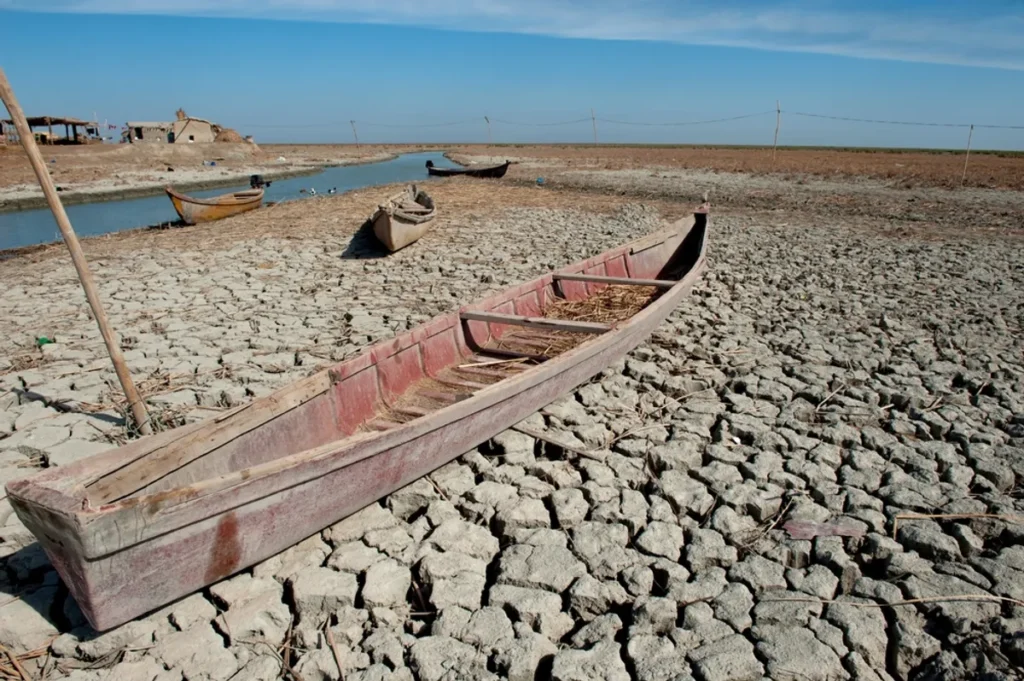
Brief Overview of WWI
World War I, often referred to as the Great War, began in 1914 and ended in 1918, impacting nations globally but significantly altering Belgium’s path. Amid complex alliances and rising nationalistic sentiments, Belgium found itself invaded by Germany, becoming a focal ground for military action, thus suffering immense devastation due to its strategic location.
Role of Belgium in WWI
During the outset of WWI, Belgium found itself inevitably drawn into the conflict due to its strategic location between Germany and France. Despite being officially neutral, the country’s fortitude was tested as it significantly influenced the early phase of the war, resisting German invasion and thereby altering Allied strategies.
Prewar Belgium
Belgium’s Neutrality and the Treaty of London
Prewar Belgium was a sovereign nation, fiercely protective of its neutrality, as acknowledged by the European powers in the 1839 Treaty of London. The treaty decreed that Belgium would remain “perpetually neutral,” obligating Britain to safeguard this status. However, in 1914, Germany violated the treaty, using Belgium as a strategic pathway to France during the early stages of World War I. This breach of Belgium’s neutrality significantly escalated the conflict, prompting Britain to join the war to uphold the treaty’s terms. Consequently, Belgium was thrust into the center of one of history’s most significant global conflicts.
Belgian Military and Fortifications Pre- WWI
Before the onset of World War I, Belgium was a neutral state with a small yet competent military. To augment its defense, the country had erected a remarkable network of military fortresses along strategic lines, primarily near the cities of Liège and Namur.
These fortified sites, equipped with heavy artillery and built with an elaborate network of trenches and underground passages, played a pivotal role in protecting the nation’s borders. Antwerp’s fortifications served as the final defense line. Belgium’s intention was to delay the enemy’s advancement considerably, giving Allied forces ample time to mobilize. This prewar military infrastructure vividly illustrates Belgium’s preparedness for the forthcoming war.
Germany’s Invasion of Belgium
The Schlieffen Plan and why Germany invaded Belgium
In late 19th and early 20th century Europe, Germany developed the Schlieffen Plan, intending to avoid a two-front war with France and Russia. Contrary to customary frontier warfare, the strategy involved a decisive initial attack against France through neutral Belgium instead of a direct confrontation along the common Franco-German border. The plan was based on the presumption that German forces could outspeed slow Russian mobilization and defeat France quickly.
Belgium’s part in this plan was simply a matter of geography. Its flat terrain was considered ideal to swiftly navigate and launch a surprise attack on France. However, the invasion on August 4, 1914, violated Belgium’s neutrality pact, with European powers igniting international indignation. The attack wasn’t merely a strategic move but a gambit that essentially made Belgium the first major battlefield of World War I, causing immeasurable destruction and devastating cultural losses.
Initial Belgian Resistance
During the early stages of the First World War, Belgium exhibited an unwavering stand against Germany’s invasive actions. Despite the well-known fact that Belgium was a smaller nation with a considerably smaller army than its aggressor, their audacity and resilience stood out. In August 1914, after Germany declared war and infringed on Belgium’s neutrality, the latter didn’t capitulate easily. Belgian forces, under the stewardship of King Albert I, put up a serious fight, engaging German troops in battles at Liege, Namur, and along the River Yser.
Carefully planned defenses and fortifications gave the Belgian resistance an organized, strategic edge, further impeding the German advance. Notably, Belgium’s stubborn contesting significantly hindered the swift German victory initially anticipated in the Schlieffen Plan, allowing the Allies vital time to prepare. This period of initial resistance is a testament to Belgian courage; they were outnumbered and outgunned but never outfought in spirit.
Occupation of Belgium
Belgian Civilian Experience and the “Rape of Belgium”
During the initial stages of World War I, Belgium suffered tremendously under the harsh German occupation, an event marked in history as the “Rape of Belgium.”. The episodes of terror, violence, and destruction leading to a large number of civilian casualties were uniquely brutal. The German invasion in 1914 was accompanied by wanton violations of international law, large-scale executions, and widespread incidents of rape, arson, and looting.
Additionally, forced labor and mass deportations marked this devastating period. Even cultural and historic properties weren’t spared and were subjected to deliberate destruction, leading to the loss of Belgium’s rich cultural heritage. Further, the heavy burden of the war tax levied on the Belgian people aggravated their ordeal. In essence, the ruthless occupation disrupted the normal course of life, creating lasting social and economic effects that stretched even beyond the end of the war.
German Administration and Exploitation of Belgium
During the lengthy period of World War I, from 1914 to 1918, Belgium, a small but significant European country, did not escape the ruthless grasp of German control. The Germans exploited Belgium’s robust economy, especially its iron, coal, and textile sectors, to support their war campaign. This systematic exploitation, combined with severe administrative measures, put the Belgian populace in an unprecedented crisis.
They implemented Flamenpolitik, a policy of cultural assimilation that aimed at splitting Belgium into separate Flemish and Walloon entities, thereby destabilizing its unity. Moreover, the Germans initiated forced labor schemes, which added to the misery of the Belgian people. Food shortages became rampant due to the diversion of resources for Germany’s benefit, provoking the Belgian government, in exile in Le Havre, France, to orchestrate international aid relief activities. Consequently, the German occupation left a deep imprint on Belgium’s history and its national consciousness.
The Christmas Truce of 1914
The Story of the Truce in Belgian Trenches
An extraordinary event took place on the war-stricken battlefields of Belgium on December 24, 1914, illuminating a unique side of humanity amidst utter chaos. The opposing British and German soldiers, stationed in trenches barely a hundred yards apart, momentarily ceased fire, setting aside their weapons of war on this sacred night. Through song, the harmonious strains of “Silent Night” echoed down the frontline, transcending the language divide.
Lights flickered as men dared to raise lanterns above the trenches. Soon the night was ablaze, not with gunfire but with shared comradeship as they ventured into no-man’s land. They exchanged greeting cards, shared stories, and even played a game of soccer. This truce was neither ordered nor formal but stemmed from the soldiers’ mutual wish for respite from war on Christmas. Though fleeting, the Christmas Truce of 1914 intensified the human spirit, reminding us that even in the worst of times, compassion prevails.
Belgian Resistance and the Yser Front
The Battle of the Yser and Belgian Army Resistance
In 1914, Belgium staunchly refused to allow German passage, leading to heavy conflicts known as the Battle of the Yser. The Belgian Army fiercely resisted, determined to protect their freedom. Despite being outnumbered and outgunned, they maintained a significant defensive position along the Yser River. A crucial tactical decision was to use floodwaters as a defensive barrier when they opened the sluice gates at Nieuwpoort to stop the German advance.
For their extraordinary courage, King Albert I and the Belgian forces were hailed as symbols of resistance against the violation of small nations’ rights. This defense played an integral role in World War I, highlighting Belgium’s resolute resistance.
Belgian Civilian Resistance Efforts
During the four-year German occupation in WWI, the Belgian civilians showed immense resilience and courage. The unyielding spirit of ordinary Belgians paved the way for covert actions, such as espionage and sabotage, significantly contributing to the allied cause. The Belgians also pioneered a structured underground press, circulating news and boosting morale.
A significant number of Belgians managed to escape the German yoke, many of whom joined the Belgian army on the Yser front. Notably, the famed ‘King Albert National Relief and Food Committee’ provided vital sustenance, proving vital in maintaining civilian morale. This determination and fortitude remain emblematic of Belgium’s World War I experience.
Post-War Belgium and the Treaty of Versailles
War Damages and the Reconstruction of Belgium
Following the cessation of World War I, Belgium faced severe destruction, with roughly one-third of the country ravaged and numerous homes, factories, and infrastructure demolished. The Treaty of Versailles in 1919 acknowledged Belgium’s hardships, entitling the nation to restitution from Germany for war damages. This resulted in Belgium’s engagements, embodied in the ‘Annexes’ section of the Treaty, which detailed German reparations to the country.
However, the actual receipt of these reparations was significantly delayed due to Germany’s economic struggles post-war. Despite the great challenges, Belgium began a determined rebuilding effort. The reconstruction process reflected the nation’s strength, resilience, and unwavering desire to regain its pre-war prosperity.
The Role of Belgium in the Treaty of Versailles
Belgium, despite suffering extensive devastation during World War I, exercised a pivotal role in shaping the Treaty of Versailles. Its Prime Minister, Georges Clemenceau, was among the key figures in negotiations, ensuring the nation received due recognition and reparation for its suffering.
A crucial contributor to this outcome was Belgium’s annexation of the German territories of Eupen and Malmedy as compensation for the horrific damage inflicted during the German occupation. Additionally, Belgium was acknowledged as a sovereign, full-fledged participant in resolving global conflict, marking an elevation in its stature within international politics.
Conclusion
Lasting Impact of WWI on Belgium
In the aftermath of WWI, Belgium’s landscape was scarred both physically and socially. The country sustained heavy damages, leaving its economy and infrastructure in ruins. Not only this, the societal fiber underwent significant changes, as a result of psychological hardships endured by the populace. The war’s echoes were undeniably profound, shaping Belgium’s modern identity.



